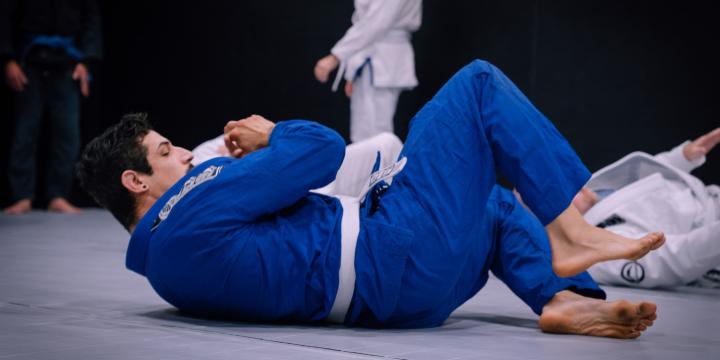What’s the difference between Jiu-Jitsu and Brazilian Jiu-Jitsu?
Diving into Brazilian Jiu-Jitsu (BJJ) is massively more meaningful when there is a foundation for its history and present. Jiu-Jitsu (JJ) was one of the first martial arts to be formed into a system to be taught and practiced. Japanese Jiu-Jitsu came long, long, long before Brazilian Jiu-Jitsu transformed. In the 1900s, the Gracie family modernized Japanese Jiu-Jitsu. Pro tip: take a little time to learn about both the traditional and more modern versions of Jiu-Jitsu to see which one is for you.
Origins
Japanese Jiu-Jitsu is difficult to explain in terms of original origins. Speculation has it that traditional Japanese Jiu-Jitsu started as a survival tool in a peaceful manner. The whole concept was that striking would be ineffective due to armor and that adding grappling methods would be a far superior form of defense. Brazilian Jiu-Jitsu is the third generation of Japanese Jiu-Jitsu and is now the most prevalent grappling art in the world. Not too shabby, huh? Talk about having to start from somewhere. BJJ’s area of specialization is taking things to the ground. After being introduced to Judo, Carlos Gracie Sr. and Helio Gracie helped to transform what is now BJJ.
Japanese vs Brazilian Jiu-Jitsu – the different ranking systems
Japanese Jiu-Jitsu Ranking System
Different traditional Japanese Jiu-Jitsu schools have different ranking systems. They all symbolize different milestones and progression towards mastering the art. There is usually a substantial syllabus that goes along with each belt for the progression. A pretty stereotypical ranking system would go:
- White
- Yellow
- Orange
- Green
- Blue
- Purple
- Brown
- Black
It is estimated that it takes roughly five years to earn your black belt in traditional Japanese Jiu-Jitsu. Whereas, Brazilian Jiu-Jitsu ranges anywhere from 8-12 to earn your black belt.
Brazilian Jiu-Jitsu Ranking System
- White
- Blue
- Purple
- Brown
- Black
- Red (only a handful have done this)
Traditional Japanese Jiu-Jitsu and Brazilian Jiu-Jitsu belts are worn to show progress, knowledge, and for the practical job of holding one’s gi from slipping or moving while training or competing.
Brazilian Jiu-Jitsu vs Japanese Jiu-Jitsu – Key Technique Differences
We’ve probably all been there and are guilty of confusing BJJ with Jujutsu (Japanese jiu-jitsu). While BJJ has a significant amount of its roots in traditional jujutsu, there are some key differences in overall technique and goals of the sport. Jujutsu is suitable and ideal for real-life combat situations while BJJ is used for sport with a primary focus on grappling. Japanese Jiu-Jitsu mostly focuses on throwing opponents, joint manipulation, striking and blocking as well as chokes – all from a self-defense perspective. BJJ is all about getting the opponent to the ground.
Brazilian Jiu-Jitsu Techniques
Guard
The guard is typically defined as any position where one person is on their back with the opponent in front of their legs. This is the position that separates BJJ from all other grappling arts.
Side Control
Side control is a pinning position where one is on top of the opponent chest-to-chest with their body laying across and out towards the side.
Turtle
The turtle position is when one is on their hands and knees with their head tightly in between, with the other person either on top or behind.
Jiu-Jitsu Techniques
Front Snap Punch
Front snap punch is used to strike the attacker or opponent in the head from a close distance.
Side Breakfall
Begin with standing and placing your right foot in front and to the left of the left foot. This will allow the left foot to rest on the side on the floor. Fall to the right and throw the right arm to break the force of the fall. Bring the left knee up and hands up to the face.
High Parry
This move is used to block straight punches or hooks. If the opponent throws a left punch, block with the left arm while twisting clockwise on the ball of your left foot.
Which one should I choose?
Ahh, it has come to answer the game-changer question here. Which one should you choose? Traditional Japanese Jujitsu or Brazilian Jiu-Jitsu? It is important to evaluate what your main goals are in terms of learning and practicing either sport. How do you want to spend your time on the mats? Traditional Jujitsu has transformed into modern times as a self-defense tactic that has evolved into including kicking and striking movements. BJJ is about bringing the opponent to the ground and to force the opponent into a position that forces submission. Do you want to strike or you take it to the ground?
Popularity
With Japanese Jiu-Jitsu’s extensive history and Brazilian Jiu-Jitsu’s increase in massive popularity due to MMA, it is difficult to accurately determine which is more popular. So how are we taking a better look into this? Google. Below is a graph of Google searches for Jujutsu vs. Brazilian Jiu-Jitsu over the last year.

Looking to start?
At The Boxing Club, we pride ourselves on bringing the best Brazilian Jiu-Jitsu classes in San Diego. We have crafted full programming based on power / stamina, flexibility, grappling, and advancing our mental strength. Our classes are designed to give newer belts a place to learn and those who are already invested, a place to keep on the learning. Learn from the best with our award-winning coaches who are intentional with the instruction they bring on and off the mats. Seasoned student or new student eager to learn, try a class with the best!






